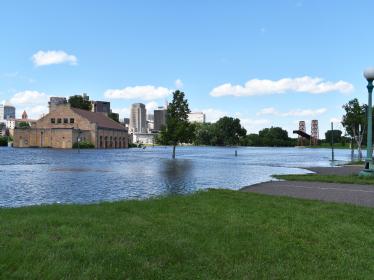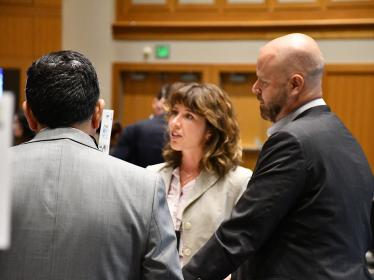Making clean-water crops a reality on the landscape
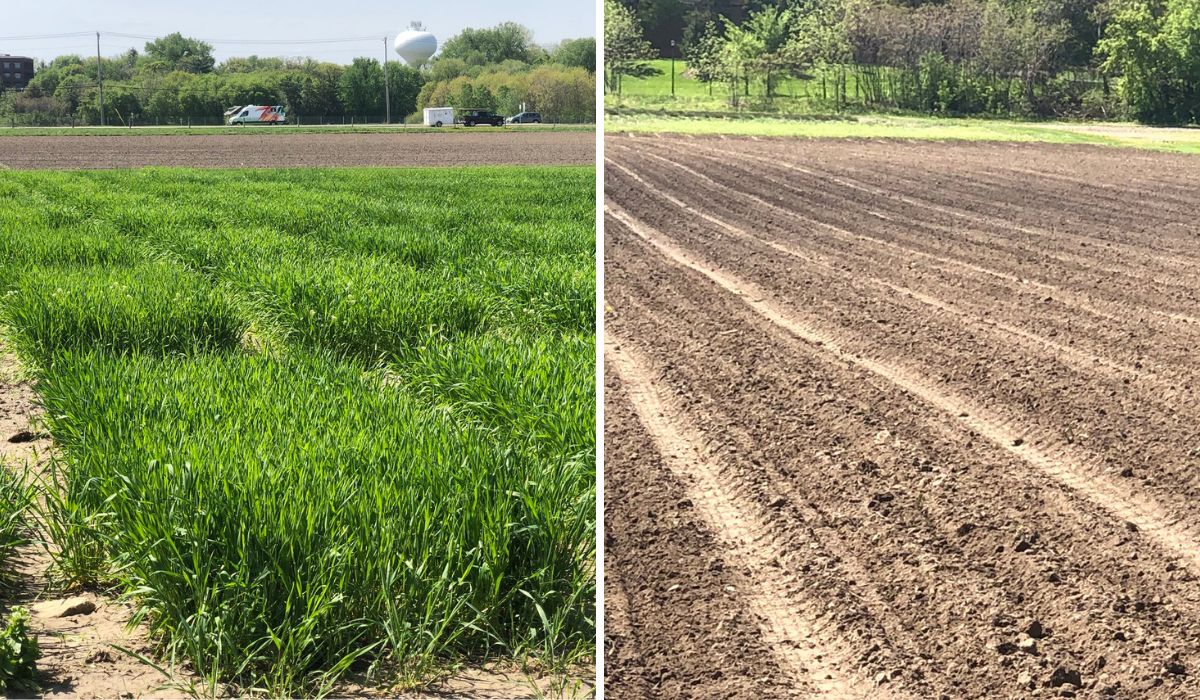
A side-by-side comparing two crops on the same day in May of 2022. On the left, Kernza perennial grain, which provides continuous living cover. On the right, a field of soybeans. (Photos by Dr. Don Wyse)
Late summer may bring "amber waves of grain," but most Minnesota farm fields lie bare and brown for much of the year, leading to erosion and runoff of soil and fertilizers. This is a leading source of pollution to our metro Mississippi as well as the dead zone downstream.
To restore the river's water quality and aquatic life, we need more green, living cover on our agricultural landscape year-round. Winter-hardy cover crops and deeper-rooted perennial crops (such as Kernza, which is related to wheat) have an important role to play in reducing erosion and pollutants like nitrates and phosphorous by acting as a filter, preventing fertilizer from contaminating local aquifers or wells, streams, and, eventually, the Mississippi River. They also improve soil health and provide important wildlife habitat.
The potential benefits are substantial: A 2023 report by FMR and Ecotone Analytics shows that Minnesota could effectively cut nitrate pollution and soil loss by 23% and 35%, respectively, via these cropping systems, while significantly reducing our carbon footprint.
Minnesota's challenge is to make the next generation of clean-water crops profitable for growers. While our approach can bring new jobs and open new doors for rural communities, these developments don't happen overnight: We need to provide the initial economic assistance, technical assistance and market access that farmers require in the early stages.
That's why we're focusing on Forever Green.
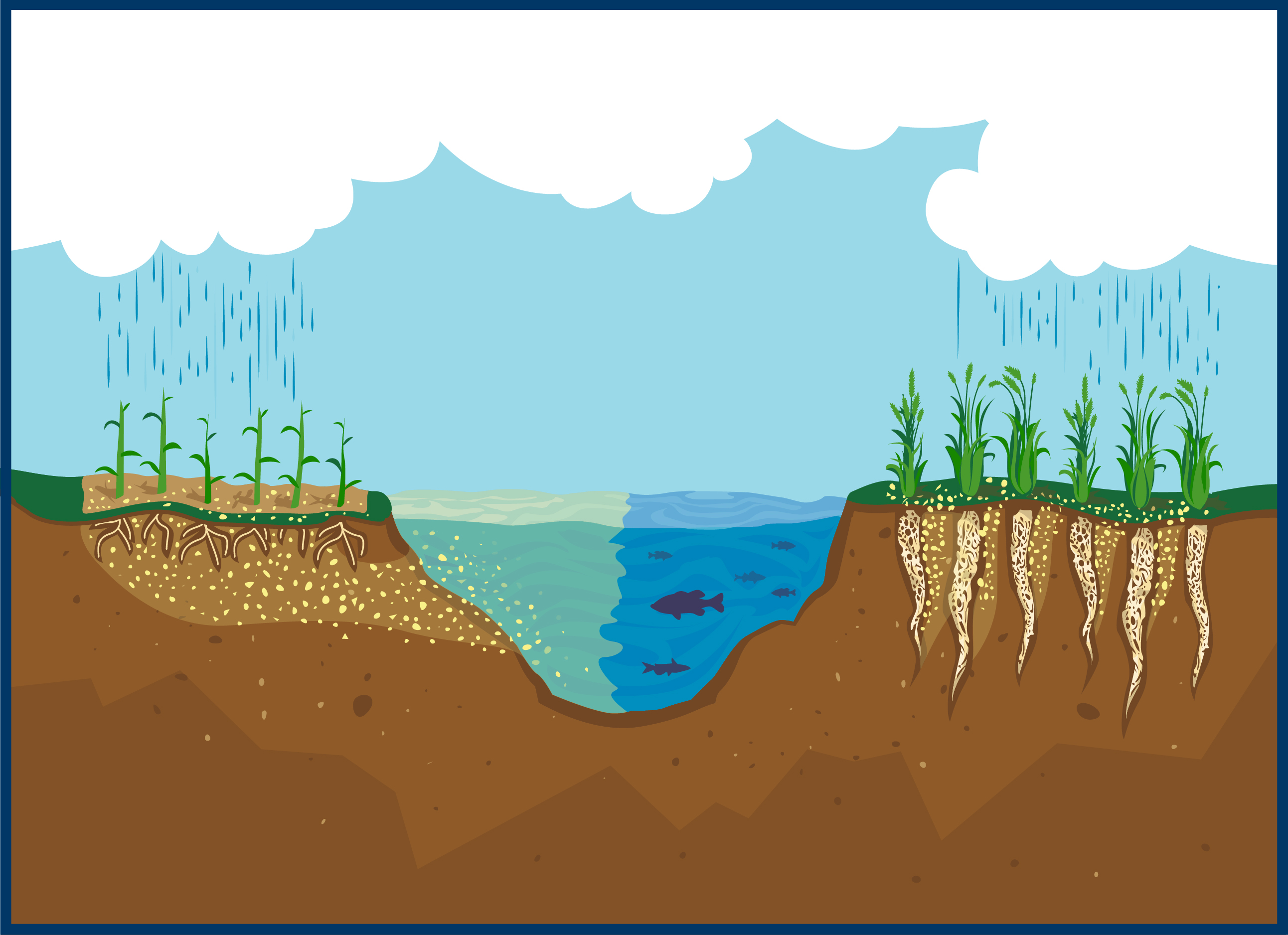
This illustration shows how nitrates, represented here by the yellow remnants, interact with short-rooted annuals (on the left) compared to a perennial such as Kernza (on the right). Kernza's long roots soak up excess nitrates, protecting both the water and aquatic wildlife.
Full funding for Forever Green
FMR's top legislative priority has long been to secure full funding for the Forever Green Initiative and Partnership.
The University of Minnesota Forever Green Initiative (FGI) is a world-class plant research and development program essential to the success of the clean-water crops approach. FGI is a driving force behind promising new perennial crops like Kernza and hybrid hazelnuts, and winter annuals like pennycress and winter camelina oilseeds. Such research takes time and talent, and by investing in Forever Green, Minnesota can accelerate our development of economically viable options for farmers.
Advancing our vision of a greener Minnesota requires collaborating with partners well beyond the environmental and research sectors. To this end, we're working with allies from across the state via the Forever Green Partnership to effectively support key projects, build political momentum, and ultimately realize our vision of achieving continuous living cover on our region's agricultural landscape. It's an ambitious effort, and we are incredibly excited about the transformative potential of the partnership.
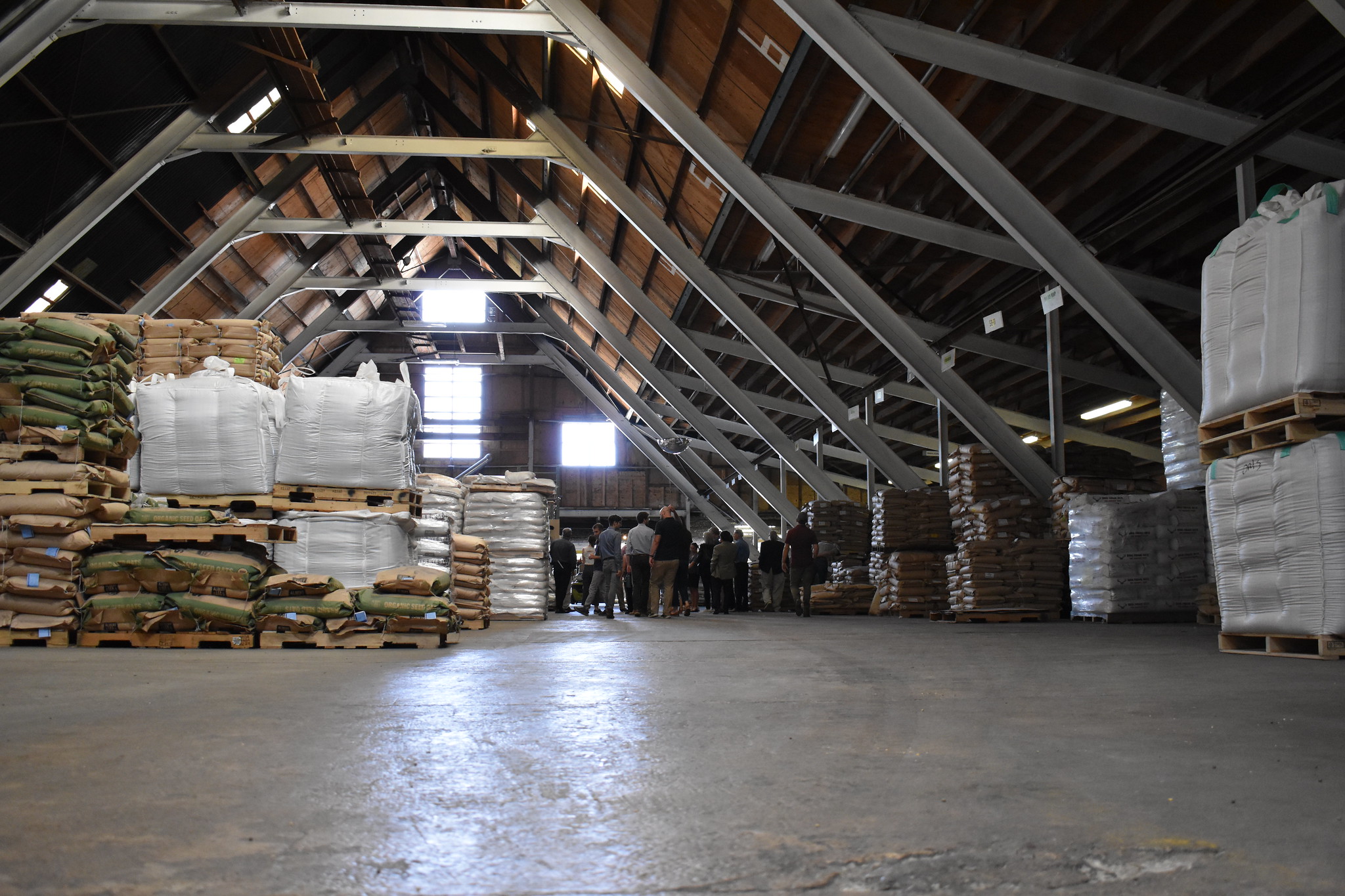
Businesses such as Albert Lea Seed, seen here hosting decision-makers during an event FMR helped organize, are crucial to scaling up the adoption of clean-water crops. (Photo by FMR)
Building out the market
Research on its own isn't enough. Nascent industries are already growing in Minnesota around Kernza, regenerative poultry systems, camelina, pennycress, hazelnuts, elderberry and more, but the markets for these crops need to grow -- in some cases, need to be created -- as does the critical infrastructure to support them.
There is a clear need for business capitalization grants to help establish this value-chain infrastructure. This means helping local start-up entrepreneurs and cooperatives (such as Perennial Pantry or the Perennial Promise Growers Cooperative) invest in equipment, storage, processing and distribution to help bring continuous living cover crops from the farm gate to the retail shelf.
Strategic public investments that help these critical pieces of the continuous living cover business ecosystem are incredibly important, particularly early on as they take root and establish themselves. Beyond the benefits to our soil, water, biodiversity and climate, we can also create new economic and community development opportunities for our state.
Why value-chain investment is important
To support expanded production of these crops and begin realizing their benefits at scale, we need significant value-chain development. Private entrepreneurship and investment will drive this scaling. But we also need early-stage public investment through a continuous living cover value-chain development fund to seed and accelerate growth of these industries in Minnesota.
This investment will further solidify Minnesota as a national and international leader in 21st-century agricultural innovation and deliver significant public benefits to Minnesotans.
Said Christopher Abbott, president of Perennial Pantry: "We have a unique opportunity to reimagine our agricultural system into one that works better for our farmers, environment and state. Without state investment, bootstrapped businesses will take longer to grow, limiting continuous living cover's growth and impact. To achieve our shared goals, entrepreneurs need to be supported to scale the supply chains that are bringing these new crops to market."
What kind of return on investment will value chain funding bring?
Let's use state investment in a new Kernza processing facility as an example. Based on projections from our friends at Perennial Pantry (one of the first companies to sell Kernza directly to consumers), a $1.5 million investment would enable them to scale up an existing processing facility to handle 2,000 pounds of grain per day.
This would result in the doubling of Kernza acreage in Minnesota, producing an additional $13 million in retail sales.
That is not only a significant increase in tax revenue for the state, it also carries dramatic environmental benefits: Because Kernza's environmental performance is so strong, it's estimated that such acreage (if grown on existing annual croplands) would also result in a 270,000 pound reduction in nitrate pollution, and prevent 24,000 tons of topsoil from eroding.
Minnesota spends millions of dollars each year to remove farm pollutants from waters. But as we all know, it's much more cost-effective to deal with a problem at its source — such as by preventing those pollutants from reaching our waters in the first place.
Become a River Guardian
Sign up and we'll email you when important river issues arise. We make it quick and easy to contact decision-makers. River Guardians are also invited to special social hours and other events about legislative and metro river corridor issues.

